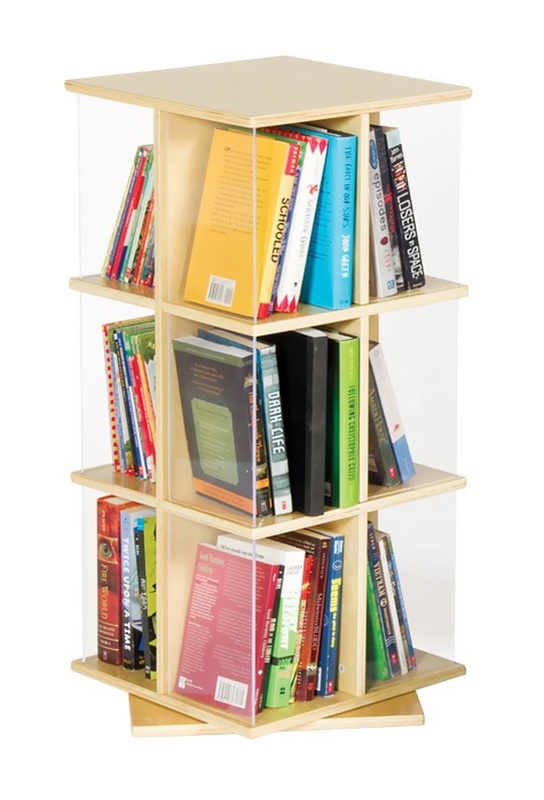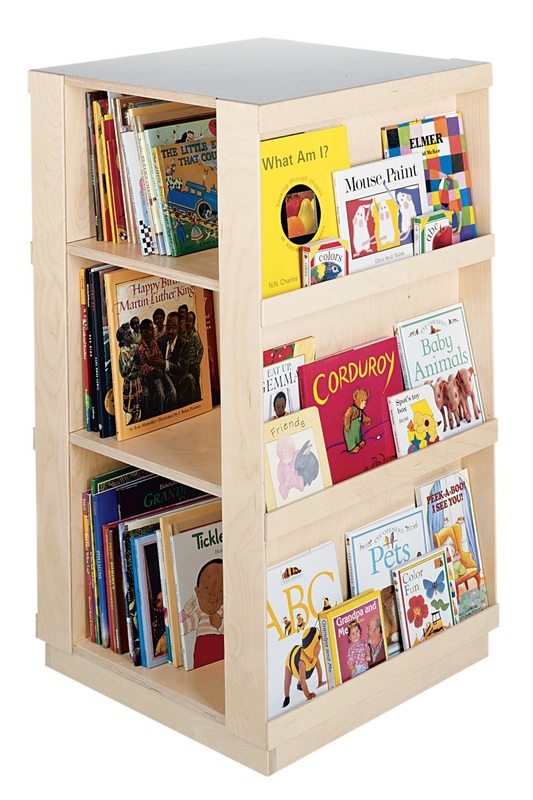Please share!
"I want to read Tikki Tikki Tembo..." Liliana says to me.
My response? "Great! Go get it!"
Organizing mounds of books can be a daunting task! Especially if kids are in and out of them all day long or in charge of putting them away. But it's one worth doing.
Liliana knows how to go find the book she's looking for because they are organized. She knows she can browse her books because she can see her books and this makes her more likely to search, sort and read whatever books she wants to - whenever she wants to. The act of gathering books is easy for her - and that's what you want.
You want it to be easy for your kid to browse books, pick a book and sit down with it to read.
Here are a few tips to help you get started on organizing your books on a bookshelf.
My response? "Great! Go get it!"
Organizing mounds of books can be a daunting task! Especially if kids are in and out of them all day long or in charge of putting them away. But it's one worth doing.
Liliana knows how to go find the book she's looking for because they are organized. She knows she can browse her books because she can see her books and this makes her more likely to search, sort and read whatever books she wants to - whenever she wants to. The act of gathering books is easy for her - and that's what you want.
You want it to be easy for your kid to browse books, pick a book and sit down with it to read.
Here are a few tips to help you get started on organizing your books on a bookshelf.
1. Divide Your Bookcase
If your bookcase doesn't have separate compartments, one of the quickest ways to make those separations is with file folders. Or cardboard - like box flaps.
Sort your books into your different desired genres. Put them on your bookcase. Put a file folder in between each genre. Or a box flap. Label that divider, put a sticker on it - whatever will help you remember what that genre is.
Pros: Low intervention, low cost and low time involved to start. Provides color-coding if you want it.
Cons: Not permanent. If the divider is pulled out, you have to replace it and possibly re-sort your books. This solution is harder for your child to grasp as they get older and browse books on their own. It's an adult way of thinking about it.
Typically, you see something like this used with bigger kids - upper elementary, middle schoolers. But, kids can be trained and if this is the way you will work best, then you would work hard to help your kiddo understand this organization system.
Sort your books into your different desired genres. Put them on your bookcase. Put a file folder in between each genre. Or a box flap. Label that divider, put a sticker on it - whatever will help you remember what that genre is.
Pros: Low intervention, low cost and low time involved to start. Provides color-coding if you want it.
Cons: Not permanent. If the divider is pulled out, you have to replace it and possibly re-sort your books. This solution is harder for your child to grasp as they get older and browse books on their own. It's an adult way of thinking about it.
Typically, you see something like this used with bigger kids - upper elementary, middle schoolers. But, kids can be trained and if this is the way you will work best, then you would work hard to help your kiddo understand this organization system.
2. Divide Your Bookcase - A different way.
|
You may consider getting book bins.
Still sort your books into genres. Then put each genre into its own bin. Label that bin. There you can handwrite a label onto an index card or sheet of paper. You'd be going for the look to the left. Not all of your bins have to live on your bookcase either. Your bedtime book bin can be near where you read your bedtime stories. You can put together a browsing board book bin to put on the floor for after nap time or near the kitchen while you're making dinner. |
Sometimes you can find really good bins at the dollar store. Otherwise, these bins are pretty good too and won't break the bank.
Pros: Relatively low intervention but costs more than plain dividers. Creates a physical space to help you and your child identify books. Kids understand sorting their treasures into boxes, bags, and bins. This is no different. Bins are movable - you can take one with you to the table, in the car, in bed, on the floor.
Cons: Costs more than plain dividers. Will take a bit more time to set-up. You will still need to sort/re-sort books, but may prove to be easier than dividers.
Pros: Relatively low intervention but costs more than plain dividers. Creates a physical space to help you and your child identify books. Kids understand sorting their treasures into boxes, bags, and bins. This is no different. Bins are movable - you can take one with you to the table, in the car, in bed, on the floor.
Cons: Costs more than plain dividers. Will take a bit more time to set-up. You will still need to sort/re-sort books, but may prove to be easier than dividers.
3. A different bookcase altogether.
There are some really awesome bookcases out there, so you could get a different kid-friendly, sorting friendly bookcase altogether. Then you would just label the compartments with post-it notes, dots, stickers, tabs - whatever you'd want. We label our compartments with post-it signature stickers - movable, color-coded and leaves no residue! Painter's tape would work really well too.
|
Spinning bookcase
This one is pretty good and takes up minimal space. Assembly is a breeze. It's what I use at home and have used in classrooms too. This bookshelf can grow-up with kids - it will store board books, picture books and as they grow, chapter books. |
Outward Facing Display
This bookcase is great because it has 6 compartments, and 6 forward facing rails. Forward facing book rails are a good way to entice and invite kids to pick up books on their own. Book covers are more interesting than book spines! |
Pros: Book bins are a thing of the past. You systematically included book storage in your routine and household. This makes it obvious that books are high priority!
Cons: High intervention and much higher cost than the other options.
Enjoy!







